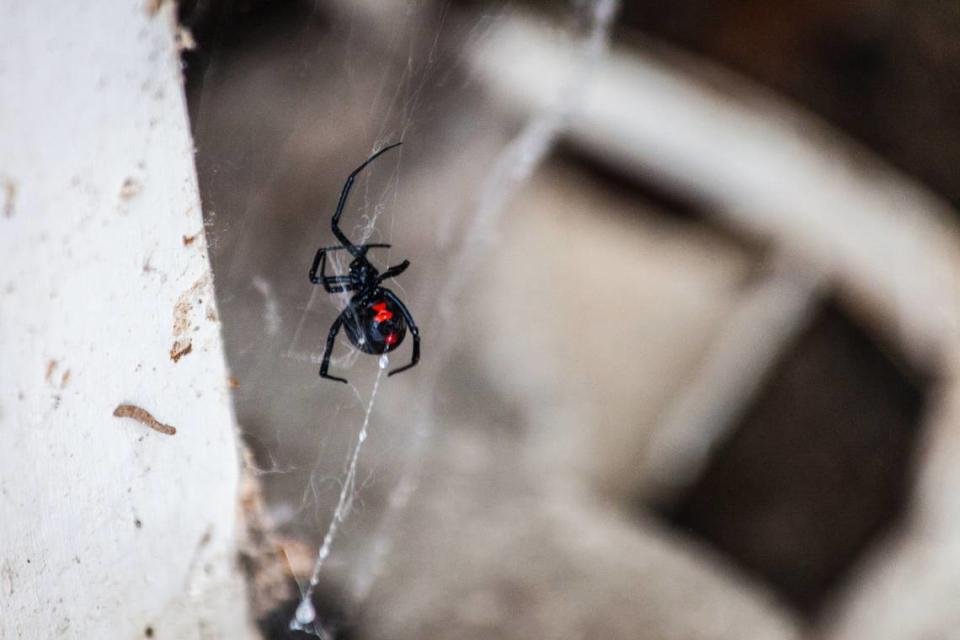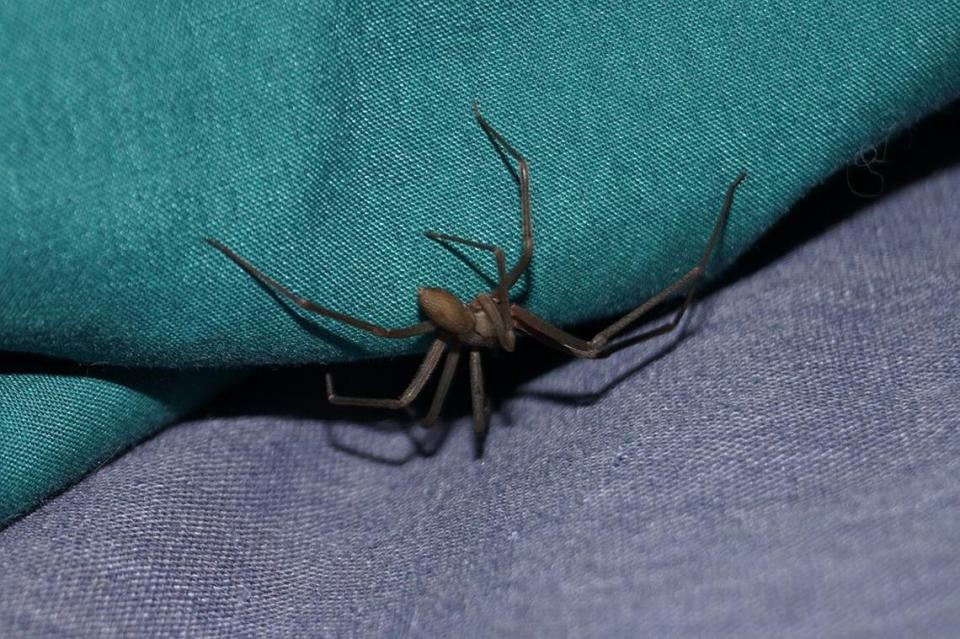Is that spider something to fear? What to know about venomous species found in Illinois
Spiders can elicit fearful reactions in some people, but the majority of species cause no harm to humans and may provide benefits. That said, there are a couple of venomous spider species in the metro-east residents might want to be able to identify.
You may hear the term “poisonous spider” from time to time, but there’s a difference between poison and venom. A toxin is considered poisonous if it is ingested and venomous if it is injected.
What you want to keep in mind is actually not whether a spider is venomous, but whether it’s considered a spider of medical significance, David Bruns, conservation educator at the Powder Valley Conservation Nature Center with the Missouri Department of Conservation, told the News-Democrat.
“All spiders are venomous, it’s just that the toxin is weak or the jaws aren’t strong enough to pierce our skin,” Bruns said.
A spider is considered to be medically significant if both conditions are met, meaning the spider’s venom is strong enough to harm humans and its jaws are able to pierce human skin. Only two spiders in the metro-east and St. Louis region fall into this category.
Here’s what to know about medically significant spider species near southwestern Illinois.
Black widow

The black widow spider is easily identified, Bruns said. It’s the only species in the St. Louis region that’s glossy black in color, rather than furry or hairy. It also has red markings on its belly and sometimes on its back.
There are two black widow species found in Illinois and Missouri: the northern black widow and the southern black widow. The southern black widow has a red hourglass marking, while the northern black widow has a broken red hourglass marking that can look like two dots.
“As for the black widow spiders, they are really more of a rural spider, more out in the country where there’s more natural habitat. So in the city, in the town, you’re pretty unlikely to ever see a black widow spider,” Bruns said.
The good news is even if you happen to stumble upon a black widow spider, it’s not going to chase you down.
“All of the spiders in the midwestern United States, including black widows and brown recluses, are non-aggressive,” Bruns said. “They will always try to escape humans.”
The world of bugs is filled with lookalike species. The false widow spider—which resembles the infamous black widow—is just one example of how nature has evolved lookalikes that can make it tough for people to tell one bug apart from another https://t.co/OJ21gq2E6m pic.twitter.com/8TVEeN1Qwn
— National Geographic (@NatGeo) July 15, 2023
When a black widow does bite someone, it’s usually because it’s been pressed up against a person’s skin and may feel it has no other options for self-defense. It is not a good idea to try to squish a black widow spider against your skin, Bruns said.
There are steps you can take to try to avoid attracting black widows near your home, Mike Bentley, vice president of training and technical services at the National Pest Management Association, told the News-Democrat.
The species tends to be drawn to cluttered, dark, undisturbed areas, Bentley continued, such as brush or piles of rocks or wood. It’s a good idea to try to keep the area around your home as clutter-free as possible.
“That’s going to give them an ideal environment where they can kind of sit and wait for their prey, so managing those areas around the structure can certainly help minimize the activity from black widows,” Bentley said.
Those who find themselves in the unfortunate situation of being bitten by a black widow spider may experience symptoms including chest pain, cramping and muscle tightness, the Illinois Department of Public Health reports.
“The more severe symptoms may not occur, and many people bitten by widow spiders do not require treatment of any kind,” IDPH’s website read. “Bites very rarely result in death. Children and the infirm are at greatest risk for complications.”
A “large case series” studying more than 23,000 exposures to black widow venom found only 1.4% of patients experienced life-threatening symptoms, according to an article about black widow spider toxicity published in the National Library of Medicine.
Another thing to keep in mind is the difficulty of accurately diagnosing a spider bite when a spider hasn’t been identified by an expert, Bruns said. Sometimes infections can be misdiagnosed as spider bites.
Brown recluse

One identifying characteristic of an adult brown recluse is a violin or fiddle shaped marking on its back. The spider typically has a light brown body and a darker brown marking, Bentley said.
If you see a spider outdoors, it’s not a brown recluse, Bruns said. The species is found in houses, sheds and garages, but not in your garden.
“Brown recluse spiders unfortunately tend to be effective hitchhikers. They don’t often just accidentally stumble into a home and infest the home. Unfortunately, the more likely method of introduction is actually going to be when somebody actually carries in an infested item,” Bentley said.
Items you bring into your home such as furniture and boxes could potentially carry brown recluse spiders.
“Oftentimes, seeing one spider can be an indication that there’s more, particularly for pests like the brown recluse spider,” Bentley said.
Minimizing cardboard boxes or switching over to plastic alternatives could help create a less ideal environment for brown recluses.
“Brown recluse spiders tend to thrive in and around corrugated cardboard boxes,” Bruns said.
Like the black widow spider, the brown recluse species is considered non-aggressive.
“Bites are really relatively uncommon of either of these,” Bruns said.
More on spiders in the St. Louis region
The vast majority of spider species found in the St. Louis region are harmless, and many provide benefits in the form of garden pest control.
“Spiders are estimated to eat the equivalent of their body weight in insects every 10 days. This amounts to an absolutely enormous number of insect pests that they’re controlling around our communities every year,” Bruns said.
Spiders can help reduce populations of flies, cockroaches and mosquitoes, researchers with the University of Illinois Urbana-Champaign report.
If you’re hoping to minimize the number of spiders you see inside your home, you might double-check all of your food is stored properly and there aren’t crumbs lying around.
“Spiders aren’t going to be anywhere where there’s not food. So if we’re doing things to attract stuff they like to eat, then we’re doing things that are ultimately going to attract those spiders,” Bentley said.
If you believe you may have brown recluse spiders living in your home, you might consider putting out sticky traps, Bruns said. This can be a good way to monitor the species’ potential presence and location in your home.

